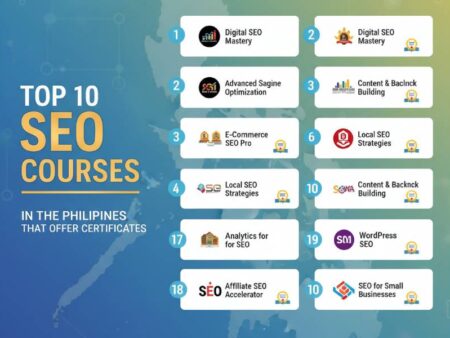
Whether you’re writing a blog post, launching an online store, or running an SEO campaign, there’s one thing you can’t afford to overlook: keyword research. Why? Because keywords connect your content with your audience. They help search engines understand what your page is about and ensure that the right people find your site. Without the right keywords, even the best content might go unnoticed.
In this guide, I’ll walk you through the entire keyword research process — step by step — in a way that’s easy to understand, actionable, and human (no robot jargon here!).
By the end, you’ll know how to conduct keyword research like a pro — and more importantly, how to use that research to grow your traffic and audience.
What is Keyword Research?
Keyword research is the process of identifying the words and phrases that people use when searching for information online.
For example:
- Someone looking for tips on growing tomatoes might search for:
“how to grow tomatoes in pots” - Someone shopping for a new laptop might type:
“best laptop for students 2025”
When you know which keywords your audience uses, you can create content that matches their search intent. That means more clicks, more engagement, and more conversions.
In short: keyword research bridges the gap between what people are searching for and what you offer.
Why Keyword Research Matters
You might wonder — can’t I just write great content and people will find it?
In theory, yes. In reality — no.
Here’s why keyword research is crucial:
1. It helps you understand your audience
You’ll gain valuable insights into how people talk about your topic, what problems they want to solve, and what words they actually use.
2. It boosts SEO and traffic
When you optimize your content for the right keywords, your pages are more likely to rank higher in search engine results (Google, Bing, etc.).
3. It helps you create better content
You can align your articles, product pages, or videos with the exact topics your audience cares about — no guessing required.
4. It helps you compete strategically
By knowing which keywords your competitors rank for, you can spot opportunities to outrank them or cover content gaps.
Keyword Research in 6 Simple Steps
Here’s a step-by-step method you can follow — whether you’re a beginner or want to refine your existing keyword research process.
Step 1: Define Your Goals
Before you dive into keyword tools, ask yourself:
What is the purpose of this content or website?
Different goals require different keywords:
- Do you want to drive sales?
- Grow your email list?
- Build brand awareness?
- Answer informational queries?
- Rank for local searches?
Your goal will shape your entire keyword research process. For example:
- An eCommerce site might focus on product-based keywords (“buy running shoes online”).
- A travel blog might focus on informational keywords (“best things to do in Paris”).
- A local business might focus on local keywords (“plumber in Brooklyn”).
Tip: Write down your primary goals so you stay focused.
Step 2: Brainstorm Seed Keywords
Now, let’s start building your keyword list.
Seed keywords are broad, general terms that describe your niche or topic. These are the starting points from which you’ll generate more specific keywords later.
For example:
If you run a website about fitness, some seed keywords might be:
- workout plans
- fitness tips
- strength training
- weight loss
If you run a site about photography, they might be:
- portrait photography
- camera reviews
- photo editing
Write down 5-10 seed keywords that represent your business, topic, or content. Don’t worry if they’re broad — you’ll refine them later.
Step 3: Use Keyword Research Tools
Next, it’s time to expand your list.
There are lots of keyword research tools that can help you find related terms, long-tail keywords, search volumes, and competition levels.
Here are some popular options (both free and paid):
Free Tools
- Google Autocomplete
Start typing your seed keywords into Google and note the suggested searches. - Google People Also Ask
Look for questions that people ask around your topic. - AnswerThePublic
Great for finding questions and conversational queries. - Google Trends
See how keyword interest changes over time.
Paid Tools (more advanced)
- Ahrefs Keywords Explorer
- SEMRush
- Moz Keyword Explorer
- Ubersuggest
How to use these tools:
- Enter your seed keywords.
- Review the keyword suggestions.
- Look at metrics like search volume (how many people search for this term per month) and keyword difficulty (how hard it is to rank for that term).
- Export your keyword lists for analysis.
Step 4: Analyze Search Intent
Now that you have a big list of keywords, here’s a crucial step that many skip: analyzing search intent.
Search intent = the reason why someone is searching for that keyword.
There are 4 main types of search intent:
| Intent Type | Example Keyword | Content Type |
| Informational | “how to tie a tie” | Blog post, tutorial |
| Navigational | “Facebook login” | Homepage, app |
| Transactional | “buy gaming laptop” | Product page |
| Commercial Investigation | “best DSLR cameras” | Reviews, comparisons |
Why it matters: If you create the wrong type of content for a keyword, you won’t rank.
Example: If someone searches “best noise-cancelling headphones” and you give them a product landing page instead of a comparison article, Google won’t rank your page.
How to analyze intent:
- Look at the top 10 Google results for your keyword.
- Notice the types of content that are ranking (blog posts, product pages, videos, etc.).
- Match your content to that intent.
Step 5: Prioritize Your Keywords
At this point, you probably have a long list of potential keywords. Now it’s time to prioritize them.
Here’s what to consider:
1. Search Volume
How many people search for this keyword each month?
Higher volume usually means more traffic potential, but also more competition.
2. Keyword Difficulty
How hard is it to rank for this keyword? Tools like Ahrefs and SEMrush give you a Keyword Difficulty (KD) score.
Aim for a mix of low, medium, and high-difficulty keywords.
3. Relevance
Is the keyword highly relevant to your business and audience?
Don’t chase high-volume keywords that aren’t closely related to your niche.
4. Intent Fit
Can you create content that matches the search intent?
If not, cross it off your list.
5. Business Value
Does ranking for this keyword help achieve your goals (sales, leads, brand awareness)?
Prioritize keywords that align with your business objectives.
Step 6: Organize and Implement Your Keywords
Finally, organize your keywords into groups or “content clusters.”
For example:
Main Topic: Home Workouts
- how to do home workouts
- best home workout equipment
- 30-minute home workout plan
- home workout for beginners
Now you can create a pillar page (main article) for “Home Workouts” and supporting articles for each subtopic.
Next steps:
- Create content based on your keyword groups.
- Optimize on-page SEO (title tags, headings, meta descriptions, internal linking).
- Monitor rankings and adjust your strategy over time.
Pro Tips for Better Keyword Research
Here are some extra tips to take your keyword research to the next level:
1. Don’t Ignore Long-Tail Keywords
Long-tail keywords are longer, more specific phrases (usually 3+ words).
Examples:
- “how to lose weight after pregnancy”
- “best DSLR camera for beginners under $500”
They often have lower competition and higher conversion rates.
2. Use Competitor Analysis
See what keywords your competitors are ranking for. Tools like Ahrefs, SEMrush, and Moz can show you this.
This helps you spot:
- Content gaps you can fill.
- Opportunities to outrank them.
- Keyword ideas you hadn’t thought of.
3. Keep Updating Your Keyword Strategy
Keyword trends change over time. Make keyword research an ongoing process — not a one-time task.
Revisit your keyword list quarterly or annually to stay ahead of the curve.
4. Combine SEO with User Experience
Don’t stuff your pages with keywords. Instead, use them naturally and focus on providing value.
Google rewards content that satisfies the user — not just keyword counts.
Summary
By following the steps in this guide:
You’ll know how to generate keyword ideas.
You’ll understand search intent.
You’ll prioritize the right keywords.
You’ll create content that ranks — and converts.
Remember: good keyword research = better SEO, better content, and better business results. So take what you’ve learned here and start applying it today. The more you practice, the better you’ll get.
Conclusion
Keyword research is both an art and a science. It’s not about chasing the biggest search volumes or gaming the system — it’s about understanding your audience and creating content that meets their needs.
Frequently Asked Questions (FAQ)
What is keyword research?
Keyword research helps you find the words and phrases people type into search engines. It guides your content so you can attract the right audience and improve search visibility.
Why is keyword research important?
It helps you understand what your audience wants. By using the right keywords, your content becomes more discoverable, increasing traffic, engagement, and potential conversions on your site.
How do I start keyword research?
Begin by brainstorming topics, then use tools like Google Keyword Planner, Ahrefs, or Ubersuggest. Analyze search volume, competition, and relevance to choose the best keywords for your content.
What makes a good keyword?
A good keyword balances search volume and competition. It should match your audience’s intent and be relevant to your content, ensuring that your site attracts quality, engaged visitors.
How often should I do keyword research?
Do keyword research regularly—before new content creation and during SEO audits. Search trends change, so updating your keyword strategy helps maintain or improve your search rankings over time.
What Are You Waiting, Enroll Now!
Learn More!Subscribe to this Page
Average rating 5 / 5. Vote count: 236
Share on Social Media
Related Posts
- Website Optimization: Simple Strategies for Beginners
- Spun Content Detection Algorithms and Google's NLP Models
- SEO Certifications: Boost Your Digital Marketing Career in the Philippines
- How to Use HARO (Help a Reporter Out) for Backlinks: A Complete Guide
- Link Juice Hijacking: The Abuse of Expired Domains and Redirected Links
Related Topics
- How Online SEO Training Can Help You Land High-Paying Jobs
- Best Ways to Get Backlinks for Your Website
- How to Build Topical Authority with White Hat SEO
- Case Study: How We Increased Organic Traffic by 312% Through White-Hat Link-Building
- How to Use HARO (Help a Reporter Out) for Backlinks: A Complete Guide








